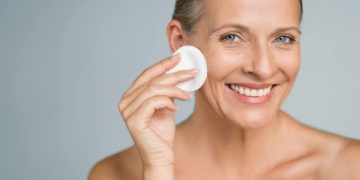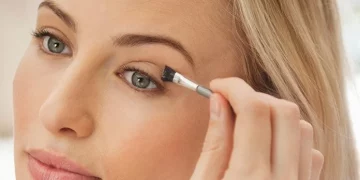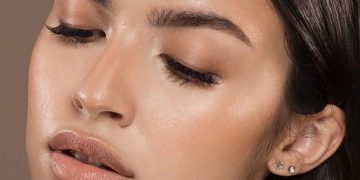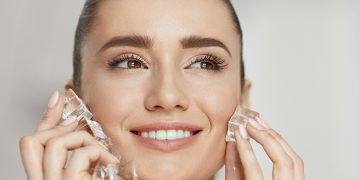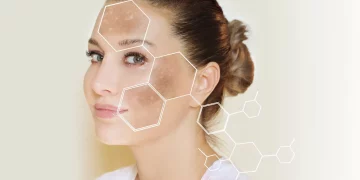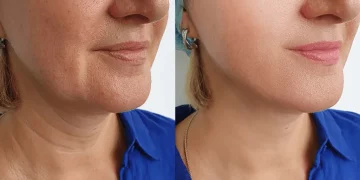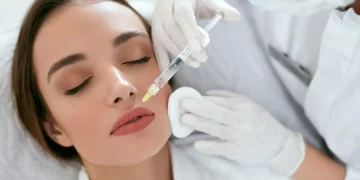Microneedling, also known as collagen induction therapy, has gained immense popularity in the world of skincare and aesthetic treatments. This minimally invasive procedure involves the use of tiny needles to create controlled micro-injuries in the skin, stimulating the body’s natural healing process. As a result, the skin produces more collagen and elastin, the proteins responsible for maintaining its firmness, smoothness, and youthful appearance. But what exactly is the real impact of microneedling on your skin? Does it live up to the hype? In this article, we will explore the science behind microneedling, how it benefits the skin, its potential risks, and everything you need to know about this transformative treatment.
What Is Microneedling?
Microneedling is a skin treatment that uses a device equipped with tiny, fine needles to create micro-punctures or micro-channels in the skin’s surface. These controlled punctures do not harm the skin but trigger the body’s natural wound-healing process. This process stimulates the production of collagen and elastin, two crucial components that help the skin stay smooth, plump, and youthful.
The device used for microneedling can vary, but it typically involves a roller or pen-like instrument that contains hundreds of fine needles. These needles vary in length, depending on the treatment area and the specific concerns being addressed. The procedure is usually performed on the face but can also be used on other areas of the body, such as the neck, chest, and hands.
How Does Microneedling Work?
Microneedling works by creating controlled injuries in the skin to stimulate collagen production. Collagen is a protein found in the skin that gives it structure, strength, and elasticity. As we age, the production of collagen decreases, leading to wrinkles, sagging, and uneven skin texture. Microneedling helps to reverse this by encouraging the skin to produce more collagen and elastin.
The tiny needles puncture the skin to create microscopic wounds that trigger the body’s natural healing process. As the skin heals, new collagen is produced, and the skin becomes thicker and more resilient. This process is called “collagen induction.” Microneedling also enhances the absorption of skincare products, allowing serums and moisturizers to penetrate deeper into the skin for more effective results.
The Benefits of Microneedling
- Improved Skin Texture and Tone One of the most noticeable benefits of microneedling is its ability to improve skin texture and tone. By stimulating collagen production, microneedling helps to smooth out uneven skin surfaces, reduce rough patches, and refine pores. Over time, the skin’s texture becomes softer, smoother, and more even. This makes microneedling an excellent option for individuals with acne scars, large pores, or rough skin.
- Reduction of Fine Lines and Wrinkles Microneedling is also effective at reducing the appearance of fine lines and wrinkles, particularly those around the eyes, mouth, and forehead. As the treatment stimulates collagen and elastin production, the skin becomes firmer and more youthful. The increased collagen helps to “fill in” fine lines and wrinkles, reducing their visibility and creating a smoother, more youthful appearance.
- Scar Treatment Microneedling is widely used to treat various types of scars, including acne scars, surgical scars, and stretch marks. The micro-injuries caused by the treatment help to break down old scar tissue and encourage the growth of new, healthy skin. Over time, this can significantly improve the appearance of scars, making them less noticeable. Acne scars, in particular, can see considerable improvement with multiple microneedling sessions.
- Improved Skin Elasticity As microneedling stimulates collagen and elastin production, it also improves the skin’s elasticity. This results in firmer, more toned skin that is less prone to sagging. Microneedling is often used in combination with other treatments, such as radiofrequency therapy, to enhance skin tightening and reduce the appearance of sagging skin.
- Hyperpigmentation and Sun Damage Microneedling can also help reduce hyperpigmentation, sun damage, and age spots by promoting the regeneration of skin cells. The treatment helps to even out skin tone by encouraging the production of new, healthy skin that is free from discoloration. This makes microneedling an excellent option for individuals looking to lighten dark spots caused by sun exposure or aging.
- Larger Pore Reduction Another benefit of microneedling is its ability to reduce the appearance of large pores. When collagen is stimulated, the skin becomes thicker and more resilient, which can make pores appear smaller. Microneedling also helps to smooth out the surface of the skin, making pores less noticeable and giving the skin a more refined appearance.
- Enhanced Absorption of Skincare Products The micro-channels created during the microneedling process allow skincare products to penetrate deeper into the skin. This means that serums, moisturizers, and other treatments applied after microneedling can be more effective. For example, hyaluronic acid or vitamin C serums can be absorbed more deeply, enhancing their effectiveness and providing greater benefits.

Potential Risks and Side Effects
While microneedling is generally considered safe for most people, there are some risks and potential side effects to consider.
- Redness and Swelling Immediately after a microneedling treatment, it is common to experience redness and swelling in the treated areas. This is a normal part of the healing process and should subside within a few hours to a couple of days. The skin may also feel slightly sensitive, similar to a mild sunburn.
- Bruising and Bleeding In rare cases, microneedling can cause bruising or minor bleeding, especially if the needles penetrate deeply into the skin. This is more likely to occur when the treatment is performed with longer needles or if the skin is particularly sensitive.
- Infection Although the risk of infection is low, it is still a potential concern. It’s essential to follow the aftercare instructions provided by your practitioner to reduce the risk of infection. This includes avoiding touching the treated area with dirty hands, staying out of direct sunlight, and avoiding harsh skincare products for a few days.
- Hyperpigmentation For individuals with darker skin tones, there is a small risk of developing hyperpigmentation or discoloration after microneedling. This is particularly true if proper aftercare instructions are not followed or if the skin is exposed to the sun before it has fully healed.
- Skin Sensitivity Microneedling can cause temporary skin sensitivity, especially for individuals with sensitive skin. This sensitivity typically subsides within a few days, but it’s important to avoid using irritating products, such as exfoliants or retinoids, during the healing process.
- Scarring Although rare, microneedling can cause scarring if the procedure is not performed correctly. This underscores the importance of choosing a licensed and experienced practitioner who understands the proper technique and depth for each individual’s skin.
Aftercare and Recovery
After a microneedling treatment, it is essential to follow proper aftercare instructions to ensure optimal results and minimize the risk of complications. Some general aftercare guidelines include:
- Avoid Sun Exposure: For at least 24 to 48 hours after treatment, avoid direct sun exposure. Your skin will be more sensitive, and sunburns can occur more easily.
- Moisturize Regularly: Keep the skin hydrated with a gentle, non-comedogenic moisturizer. This will help soothe the skin and promote healing.
- Avoid Makeup: For at least 24 hours after the procedure, avoid applying makeup to the treated areas to reduce the risk of irritation or infection.
- Gentle Skincare: Use mild, non-exfoliating skincare products for a few days after treatment to avoid irritating the skin.
- Avoid Sweating: For at least 24 hours, avoid activities that cause excessive sweating, such as intense exercise or saunas, as this can lead to irritation or infection.
How Long Does It Take to See Results?
The results of microneedling are not immediate. It typically takes a few weeks for the body to begin producing collagen and elastin in response to the treatment. For some individuals, visible improvements in skin texture, tone, and firmness may appear within one to two weeks, but optimal results are often seen after three to six months. Multiple treatments are usually required to achieve the best results, with sessions spaced about four to six weeks apart.
Is Microneedling Right for You?
Microneedling can be an effective treatment for many people looking to improve the texture, tone, and overall appearance of their skin. However, it may not be suitable for everyone. Those with active acne, eczema, or certain skin conditions may need to avoid microneedling or consult with a dermatologist before undergoing the treatment. Additionally, individuals with darker skin tones should proceed with caution, as there is a small risk of hyperpigmentation.
If you are considering microneedling, it’s important to consult with a licensed skincare professional to determine if this treatment is appropriate for your skin type and concerns.
Conclusion
Microneedling is a powerful and versatile treatment that can improve skin texture, reduce wrinkles, and address a variety of skin concerns. By stimulating collagen and elastin production, it helps to rejuvenate the skin, providing a more youthful and radiant appearance. While the procedure is generally safe, it’s important to understand the potential risks and side effects, as well as follow proper aftercare instructions to achieve the best results. With the right approach, microneedling can be a transformative tool in your skincare regimen.






